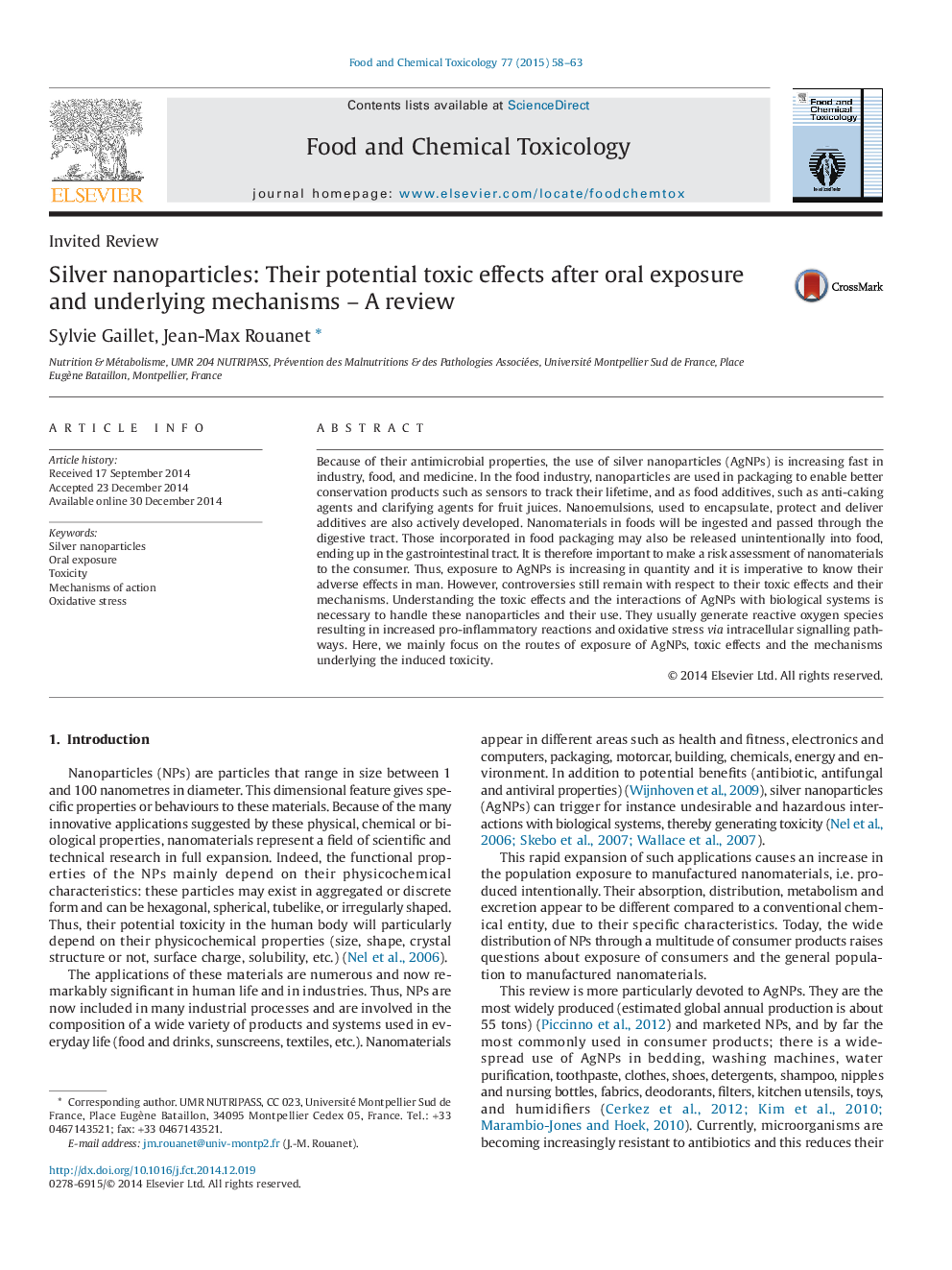| Article ID | Journal | Published Year | Pages | File Type |
|---|---|---|---|---|
| 2584951 | Food and Chemical Toxicology | 2015 | 6 Pages |
•The food industry uses silver nanoparticles as sensors, dietary supplements, additives, and in packaging.•They represent a potential risk of toxicity to the consumer, the intestinal tract and liver being their main targets.•Silver nanoparticles can produce free radicals and cause oxidative stress in cells, inducing oxidative damage.•Oxidative stress mediates toxicity by triggering inflammatory reactions and death by necrosis or apoptosis.
Because of their antimicrobial properties, the use of silver nanoparticles (AgNPs) is increasing fast in industry, food, and medicine. In the food industry, nanoparticles are used in packaging to enable better conservation products such as sensors to track their lifetime, and as food additives, such as anti-caking agents and clarifying agents for fruit juices. Nanoemulsions, used to encapsulate, protect and deliver additives are also actively developed. Nanomaterials in foods will be ingested and passed through the digestive tract. Those incorporated in food packaging may also be released unintentionally into food, ending up in the gastrointestinal tract. It is therefore important to make a risk assessment of nanomaterials to the consumer. Thus, exposure to AgNPs is increasing in quantity and it is imperative to know their adverse effects in man. However, controversies still remain with respect to their toxic effects and their mechanisms. Understanding the toxic effects and the interactions of AgNPs with biological systems is necessary to handle these nanoparticles and their use. They usually generate reactive oxygen species resulting in increased pro-inflammatory reactions and oxidative stress via intracellular signalling pathways. Here, we mainly focus on the routes of exposure of AgNPs, toxic effects and the mechanisms underlying the induced toxicity.
Graphical AbstractFigure optionsDownload full-size imageDownload as PowerPoint slide
